Ancient Egyptian medicine combined spiritual belief and scientific practice, forming the foundation for later Greek and Roman systems. Egyptian doctors, both men and women, were skilled healers and priests, specializing in fields like dentistry, surgery, and gynecology. They emphasized cleanliness, nutrition, and early concepts of blood circulation. Treatments included herbal remedies, surgical tools, and magical incantations, often invoking deities such as Heka and Sekhmet. Medical education was centered in “Houses of Life,” with renowned figures like Hesy-Ra and Peseshet. Key texts like the Edwin Smith and Ebers Papyri reveal their advanced medical knowledge, including brain surgery and pregnancy tests, showcasing their lasting impact on medical history.
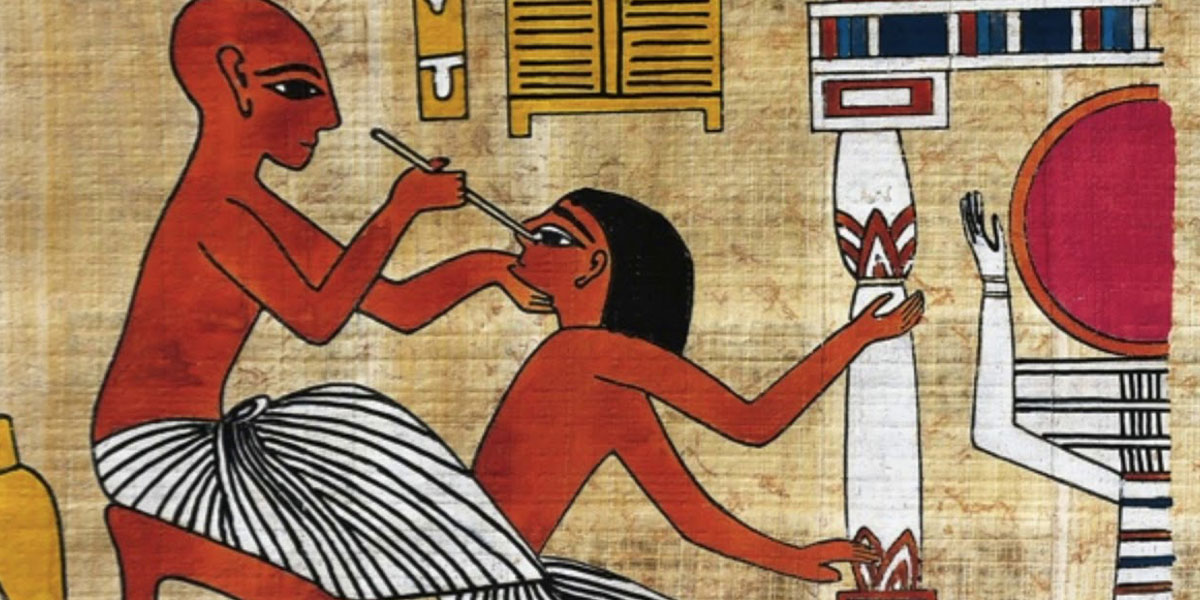
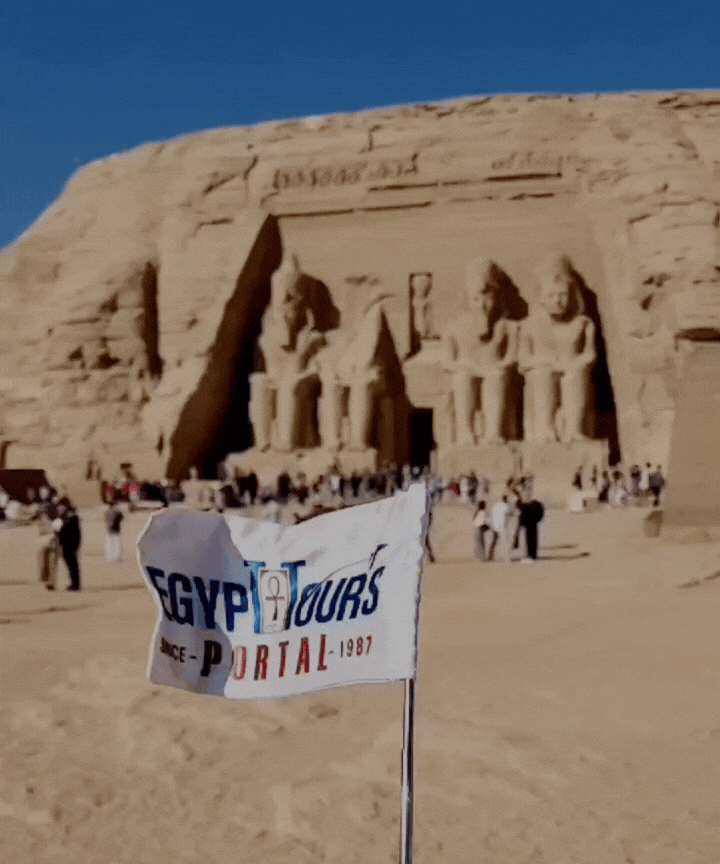
Ancient Egyptian Medicine was able to ease the pain of the ill and the wounded with the help of the ancient Egyptian doctors, who understood the mysterious connection between the complexity of the human body, the supernatural world, and the hidden power of nature. In ancient times, the Egyptians declared medicine a necessary art, and the Egyptian doctors were the absolute elite and renowned all over the ancient world for their exceptional skill in this art form.
The medical practice in Egypt was highly advanced, as it was the main reason for the rise of any medical practice in Greece and Rome. But also their explanations of these afflictions were based on the belief they were the work of the gods, caused by the presence of the evil spirits, and the only cure was to rid the body of their influence by praying to the gods and accompanied by various medications and a possible surgical operation.
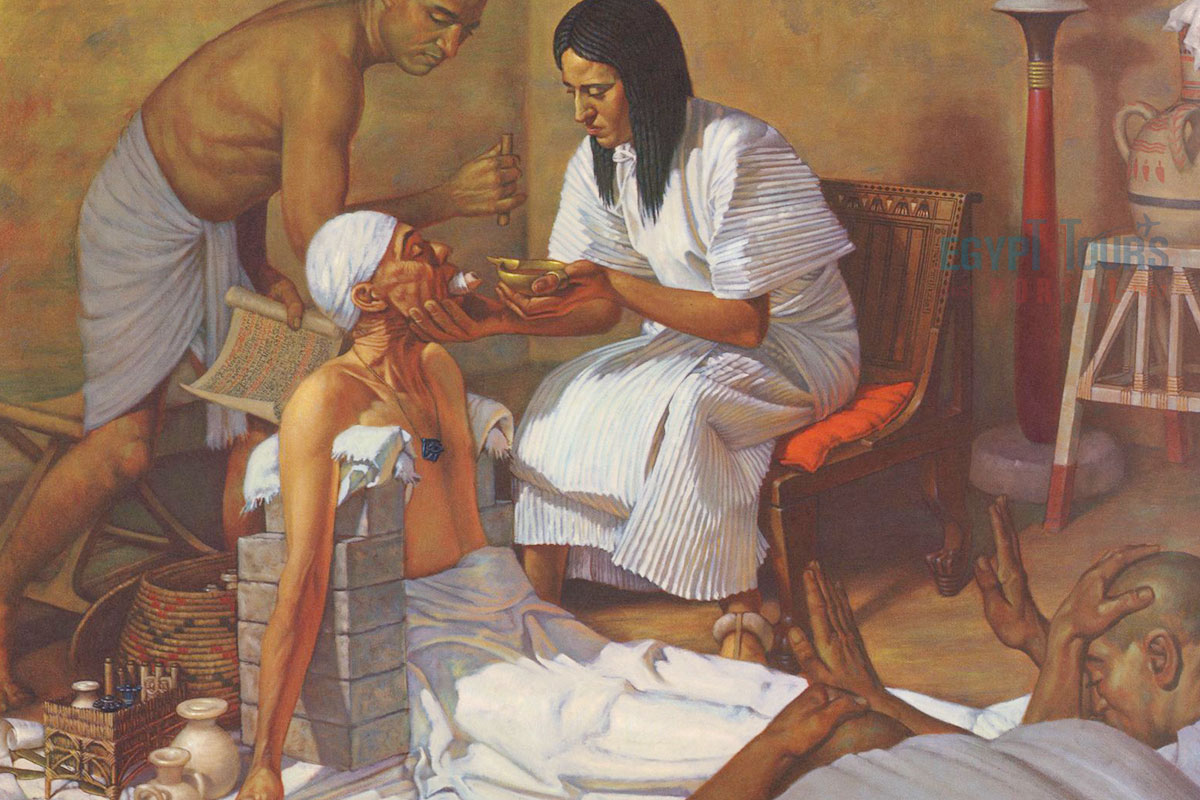
During ancient Egypt, the medical profession had its hierarchy, as this ancient Egyptian job or profession was in third place after the chief medical officer and the inspector of physicians. The doctors had many ranks and specialized in every possible field, like ophthalmology, gastroenterology, proctology, and dentistry. The doctors were referred to as "Wabau" which means ritually pure, and were treated as priests who knew every form of magic.
Physicians in ancient Egypt could be male or female as the earliest recorded physician in the world is Hesy-Ra who was the "Chief of Dentists and Physicians" to pharaoh Djoser of the 27th century BC while The lady Peseshet (2400 BC) is the first recorded female doctor who could be the mother of Akhethohep, she is known as Imy-R Swnwt according to her tomb which translates to "Lady overseer of the lady Physicians".
In the 1st dynasty, there were institutions known as houses of life (Per Ankh) that had medical functions and were in inscriptions with physicians, and the record shows that in the 19th dynasty (1292-1189 BC), the employees of the house of life enjoyed medical insurance, pensions, and sick leave. The profession of nurses was also highly respected and honored. Nurses could be male or female, and there was no evidence for any kind of school or professional nursing training.
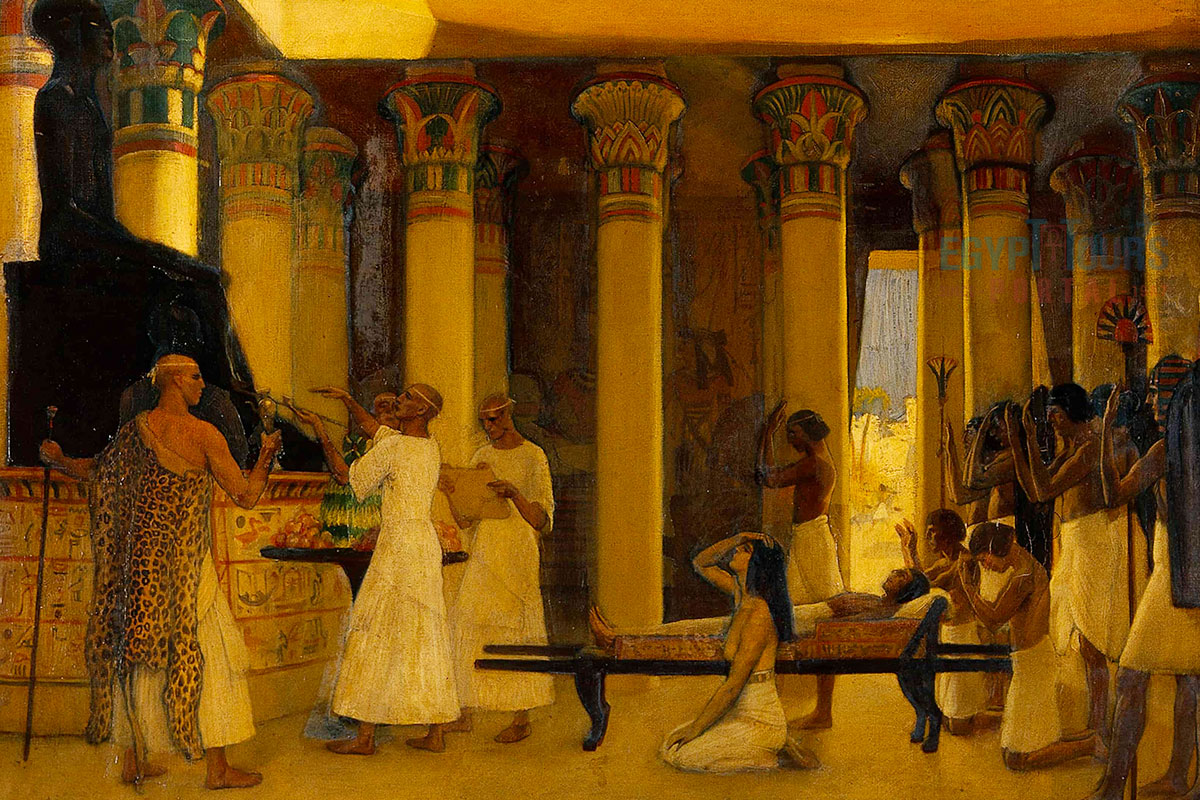
Magic and religion walked hand in hand during the ancient Egyptian civilization and had a profound effect on the Egyptian medical order. The Egyptian believed that the cause of any disease are evil gods, demons, curses or even an angry ghost and was treated as a by certain incantations, aromas, offerings, tattoos, amulets like the Eye of Horus, the knot of others and many others and praying to a deity such as Sekhmet the goddess of healing, threats and curses or Heka the god of magic who carried a staff entwined with two serpents.
Explore the magnificent religion of the ancient Egyptian civilization
Read More
The ancient Egyptian society suffered from numerous diseases we have today which include bilharziasis which is' a disease contracted and spread through contaminated water', trachoma which is 'an infection of the eye', heart disease, malaria, liver disease, dysentery, cancer, smallpox, pneumonia, typhoid, arthritis, high blood pressure, the common cold, bronchitis, tuberculosis, appendicitis, dementia, kidney stones, curvature of the spine, and ovarian cysts.
In the early days of the Egyptian civilization, the doctors were considered to be magician who treated their patients with a recitation of magical spells and certain remedies which ingredients was derived from the substance or animal that had characteristic in a way similar to the symptoms of the patient, this method is called Simila Similibus (similar with similar) which can be tracked throughout history until the discovery of Homeopathy in the mother era, was written on papyrus scrolls.

The ancient Egyptians understood the concept of "you are what you eat." The ancient Egyptians were aware of the importance of diet and based it on the principles of moderation and balance. The Egyptian lands were highly fertile, which led to the mass production of many crops that led to the creation of a variety of the most delicious ancient Egyptian foods and cuisines.
The main crops of Egypt were wheat and barley, which were consumed in the form of loaves that were produced in a variety of types through fermentation and baking, and adding yeast was able to enrich the nutritional value of the product. It is estimated that back then, one farmer's crop could support twenty adults.
Barley was also used for creating a beer, and various kinds of vegetables and fruits were widely grown. They used oil in cocking, which they extracted from the linseed plant, plus they had a limited selection of spices and herbs.
The main source of protein was fish, which was widely consumed, while meat like sheep, goats, and various wild ancient Egyptian animals was regularly available in the upper classes only. The ancient Egyptians enforced prohibitions against certain animals, like pigs, which the ancient Egyptians believed were 'unclean'.

The ancient Egyptians had incredible knowledge in the field of human anatomy, as the mummification process explains. They were aware of the existence of a pulse which was connected to the heart, they were able to develop a theory known as channels that carried air, water, and blood to the body just like how if the river Nile was blocked the crops would be ruined, they would often use laxatives to unblock these channels if the person is unwell, this indicates their understanding of the concept of blood vessels, nerves, and tendons. The ancient Egyptian doctors were required to stay healthy and to wash and shave daily to prevent the spread of any infections, as written the Edwin Smith papyrus.
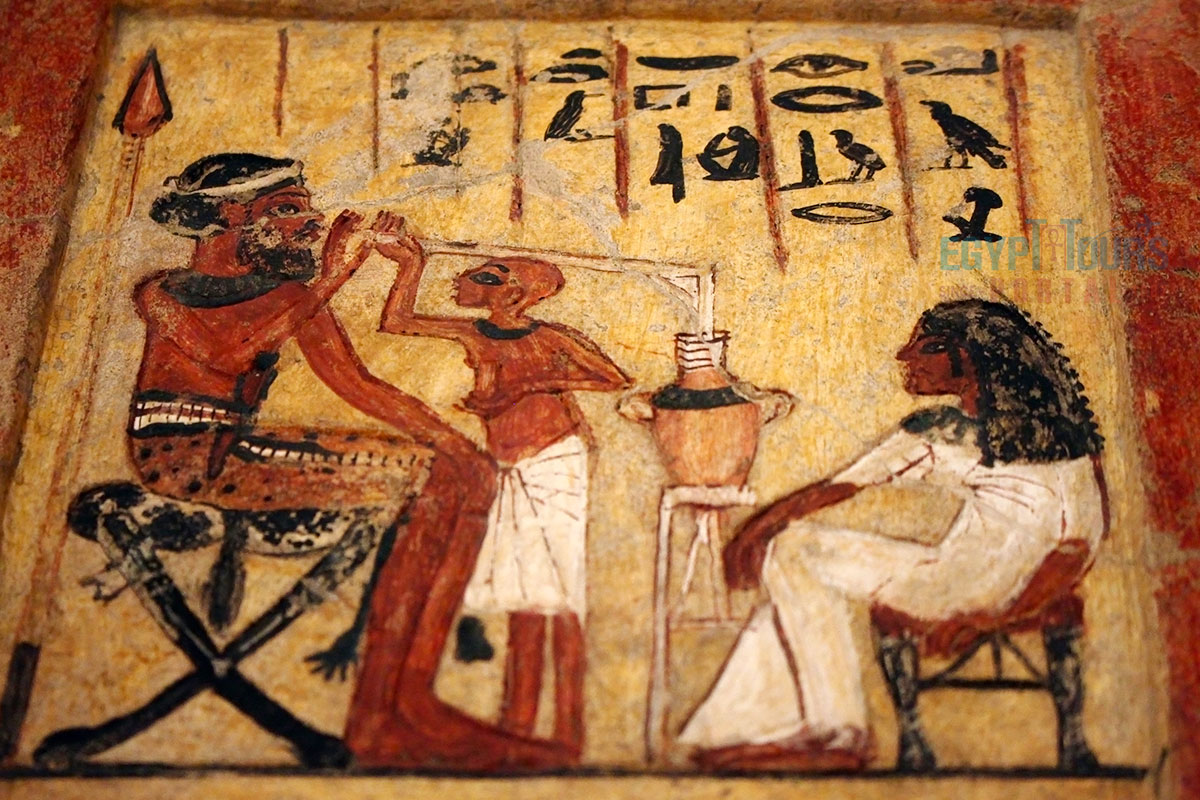
Ancient Egyptian medicine was a multifaceted system blending practical, herbal treatments with a strong reliance on spiritual and magical practices. This unique approach recognized three main types of illnesses: physical injuries, internal diseases, and spiritual afflictions. Physical injuries were treated with basic surgeries, setting broken bones, and topical ointments.
For example, wounds were dressed with honey and moldy bread to prevent infection due to honey’s natural antibacterial properties. Internal diseases, such as digestive or respiratory issues, were treated with a wide array of pharmaceuticals derived from plants, minerals, and occasionally animal products.
Spiritual illnesses were believed to result from curses or demonic possessions, treated by priest-doctors who employed magical incantations, amulets, and charms. This balanced approach illustrates the Egyptians’ holistic view of health, aiming to heal both the physical body and the spiritual self.

Ancient Egyptian doctors used a variety of medical instruments, many resembling those used today, particularly in surgery and dentistry. Archaeologists have unearthed scalpels, bone saws, dental pliers, forceps, and needles, often made of copper or bronze, in the tombs of Egyptian doctors.
Instruments specific to Egyptian medicine included the speculum for gynecological examinations and a vase for burning incense, used to purify the air around the patient during surgical procedures. Among the unique tools was the “Shepherd of the Anus,” a rectal speculum used for administering enemas, a common practice in their approach to cleansing the digestive system.
Precision scales were also vital for measuring ingredients in pharmaceutical recipes, ensuring consistent and accurate dosages. These tools illustrate the Egyptians’ impressive surgical skills and understanding of sanitation.

Herbs played a vital role in the healing of many diseases and infections in ancient times. Treatments for skin conditions are found in ancient medical texts; for skin ailments involving lesions, the Egyptians often prescribed herbal ointments and honey due to its antiseptic properties.
A mixture from the Ebers Papyrus, for example, combines astringent substances like acacia and willow, which could soothe sores. Other treatments included the application of balms made from plant extracts or oils. Also, Spiritual methods such as reciting protective spells or wearing amulets were common, as it was believed these would ward off the “evil” causing the illness.
They would mix many other combinations of herbs in a specific manner, and some of the most used were garlic and onions, which were seen as a source of endurance and were consumed in large quantities, plus they used other herbs like:

The act of surgery was a common practice among physicians; they understood that there were three categories of injuries: treatable, contestable, and untreatable. The surgical approach was made in minor ailments; they used knives, drills, hooks, scales, saws, pincers, bandages of linen, scissors, and a vase with burning incense. They were also the first to use opium as a form of painkiller and as a drug during any surgery.
Circumcision of males was highly common, as it was performed on adult males from the ages of 10 to 14 as a custom to indicate their passage from boyhood to manhood. These surgeries were often successful, as seen on the mummies and the remains found on amputations and brain surgeries. The ancient Egyptian doctors also used prostheses such as artificial toes, eyeballs, and created cosmetics like lotions, salves for skincare.
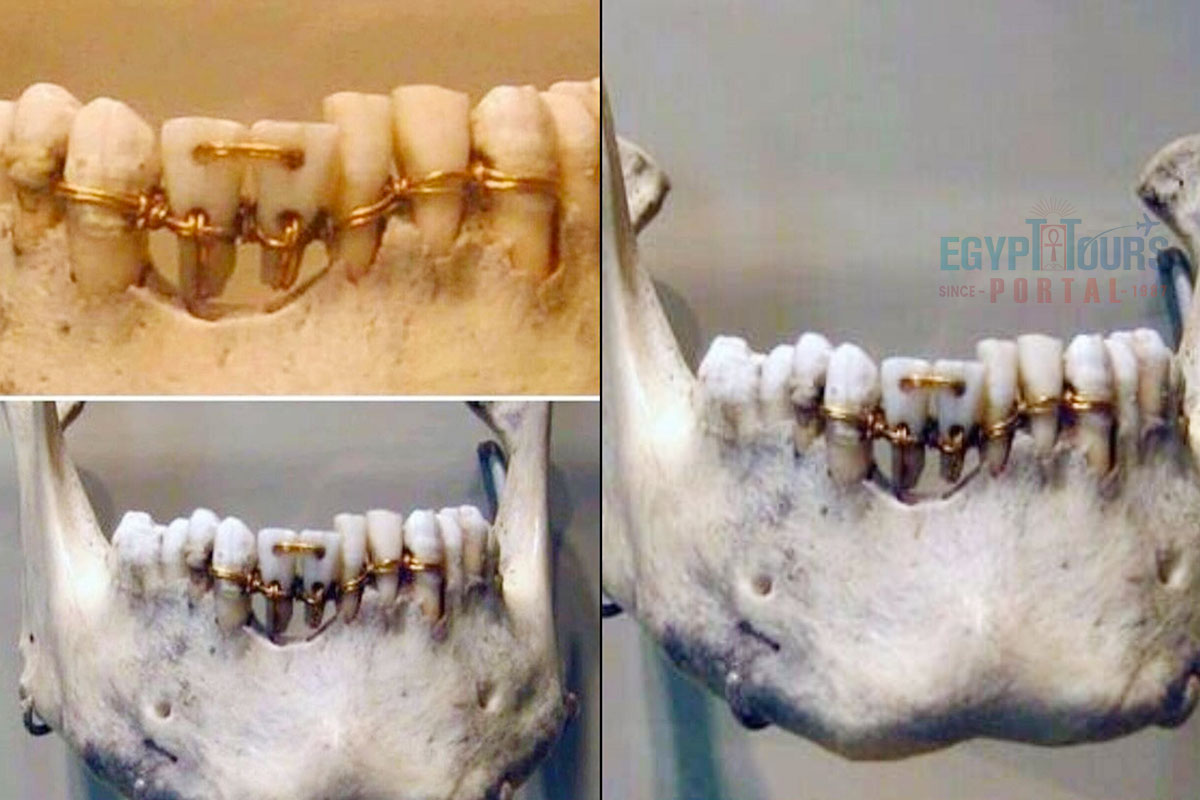
The field of dentistry was an important field of study in ancient Egypt since the third millennium. A dental disease could be fatal, as in the case of Queen Hatshepsut, who died of an abscessed tooth because the Egyptian diet was based on coarse bread and filled with sand, which made their teeth very poor. They had a role which states, "There is no tooth that rots yet stays in place," that's the way some replacement teeth were found, and signs of restorative dentistry were discovered in mummies.

In 1822 AD, the translation of the rosette stone allowed the interpretation of the ancient hieroglyphics texts which led to the discovery of several medical documents dating back to 3000 BC like: The ever papyrus, the Edwin Smith Papyrus, the berlin & London medical Papyrus, the Hearst Papyrus and countless others which were able to shed some light on the medical advances of the ancient Egyptians.
Out of all the Papyrus, these two documents were able to showcase and inform a great deal about the medical aspect of the ancient Egyptian civilization:
was written in 1600 BC as a textbook on surgery, trauma, and details anatomical observations and notes on the examination, diagnosis, treatment, and prognosis of numerous diseases. It is viewed as a copy of several earlier texts that hold Medical information dating as early as 3000 BC.
The papyrus contains the first-ever known descriptions of the cranial sutures, the cerebrospinal fluid, the external surface of the brain, and the intracranial pulsations. Imhotep, in the 3rd dynasty of the Old Kingdom, is credited as the original author of the papyrus text and founder of ancient Egyptian medicine. It also showcases that the earliest known form of surgery was performed in Egypt around 2750 BC.
It was created in 1550 BC and is full of 700 magical incantations and remedies meant to cast away the evil spirits causing the diseases. The Papyrus explains that the heart is the center of the blood supply, with countless vessels attached to every organ in the body, and a bit of information about the kidneys.
It holds the earliest documented awareness of tumors if the poorly understood ancient medical terminology has been correctly interpreted. Much information comes from the images and drawings on the walls of the Egyptian tombs and the translation of the accompanying inscriptions.
The London Medical Papyrus (c. 1782-1570 BCE) was related to issues of the eyes, skin, burns, and pregnancy.
It is also known as the Brugsch Papyrus, dates to the New Kingdom between 1570 and 1069 BC, and deals with contraception, fertility, and includes the earliest known form of pregnancy tests.
The Kahun Gynaecological Papyrus of 1800 BC dealt mainly with women's health, pregnancy, fertility, contraception, and many other topics.
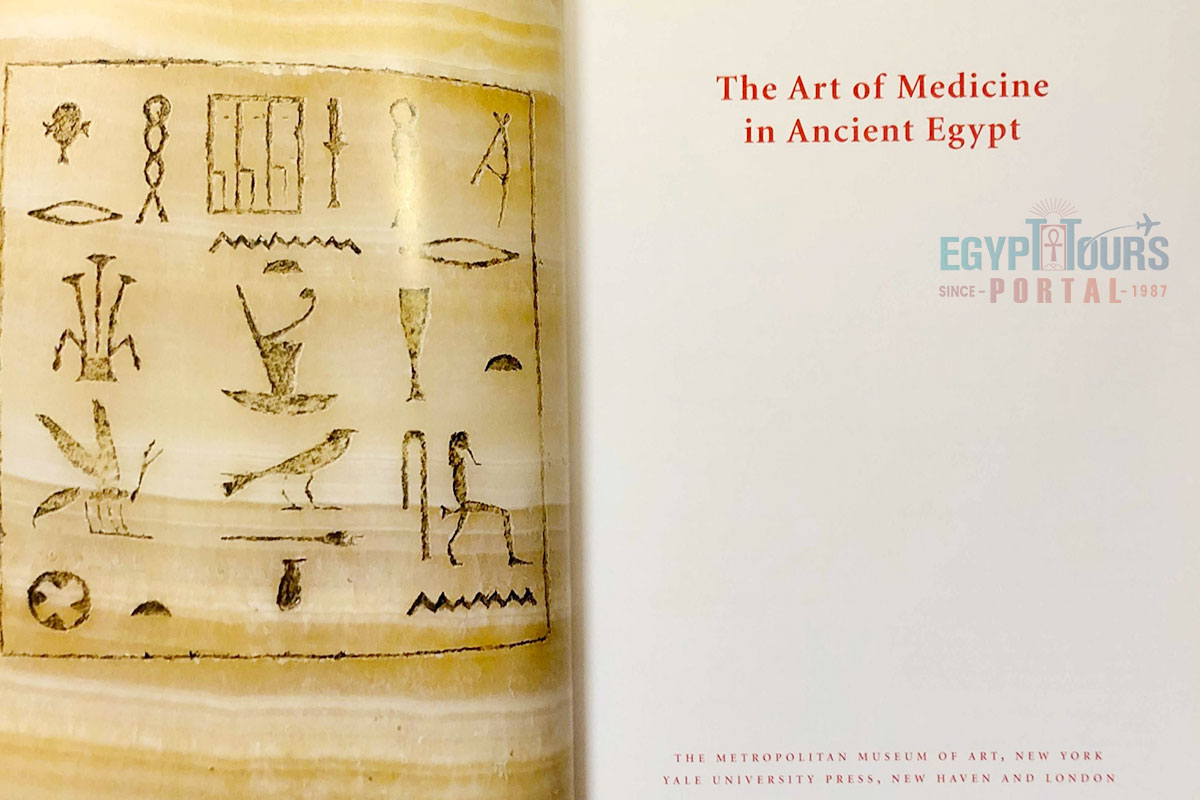
There are a number of modern books about ancient Egypt that provide a comprehensive understanding of medical knowledge and practices in ancient Egypt, ranging from the use of herbs and surgical procedures to the role of magic in health and healing, which were translated from all the papyrus mentioned in this article. Some of the most famous books include the following:
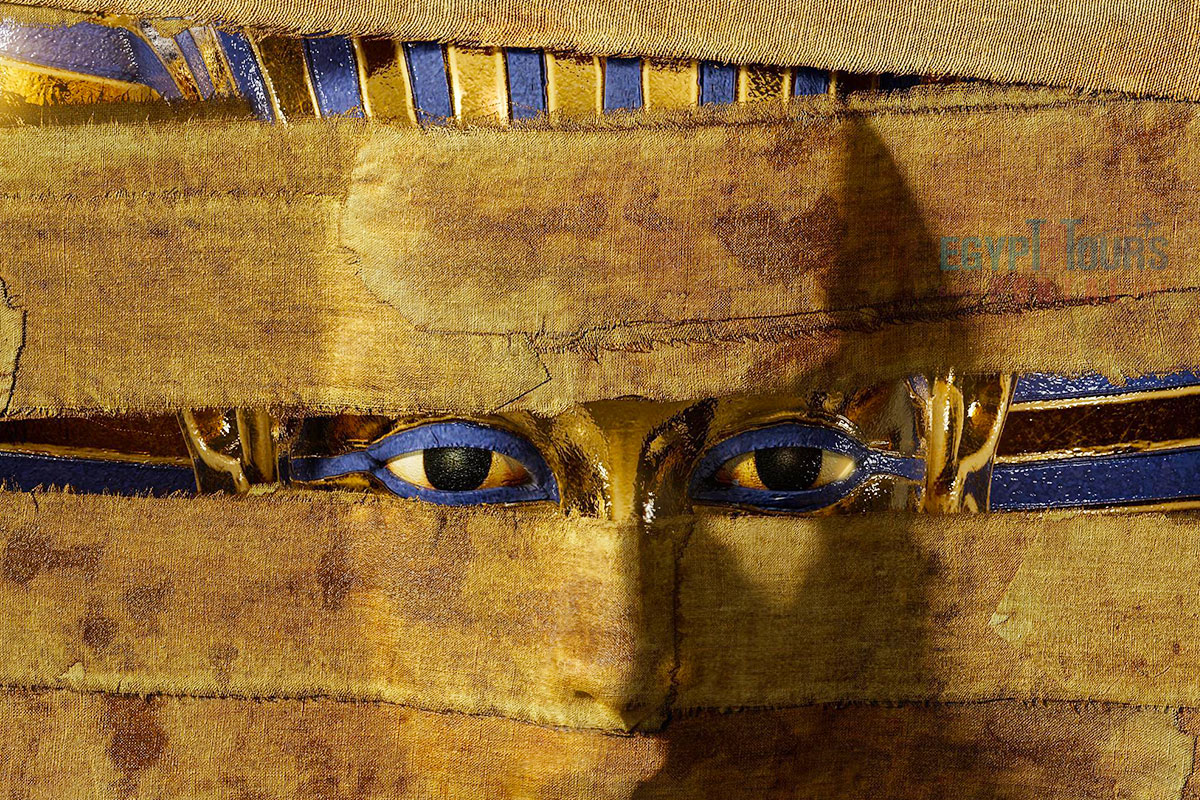
Eye health was a priority in ancient Egypt, largely due to the dusty environment and prevalent eye diseases. The Edwin Smith Papyrus details remedies for treating eye injuries and infections. Physicians used medicinal treatments, such as kohl eyeliner containing galena, which had antibacterial properties that helped prevent infections and shielded eyes from the sun.
Other common ingredients in eye treatments included castor oil, used for its soothing qualities, and acacia, known for its anti-inflammatory properties. Egyptians took an early, preventive approach to ophthalmology, with daily applications of kohl and specific remedies that reflect a significant understanding of eye care.

Some Egyptian remedies seem strange by today’s standards. They sometimes used crocodile dung as a contraceptive ingredient and included mixtures of animal excrement in wound treatments, thinking it held magical properties. Ground mummy remains were sometimes used in healing rituals due to the belief that the body retained its spiritual power.
Physicians prescribed seemingly unrelated ingredients, such as fish bones or crushed beetles, which were thought to imbue patients with strength or protection. These remedies highlight the Egyptian belief in sympathetic magic, where ingredients’ symbolic attributes were thought to transfer to the patient.

Incantations were an integral part of Egyptian healing, with many spells intended to dispel evil forces and mythical ancient Egyptian creatures believed to cause illness. Egyptian physicians often used these incantations to summon the help of gods like Heka (god of magic) and Sekhmet (goddess of healing) or to drive out malevolent spirits.
The Hearst Papyrus contains spells for urinary and skin issues, while the London Medical Papyrus has incantations for treating burns and pregnancy issues. Physicians would chant these incantations while applying ointments or administering remedies, ensuring the patient was both physically and spiritually protected. These incantations highlight the Egyptians’ view of health as a state of harmony between body and spirit.
Explore the extraordinary magic of the ancient Egyptian civilization
Read More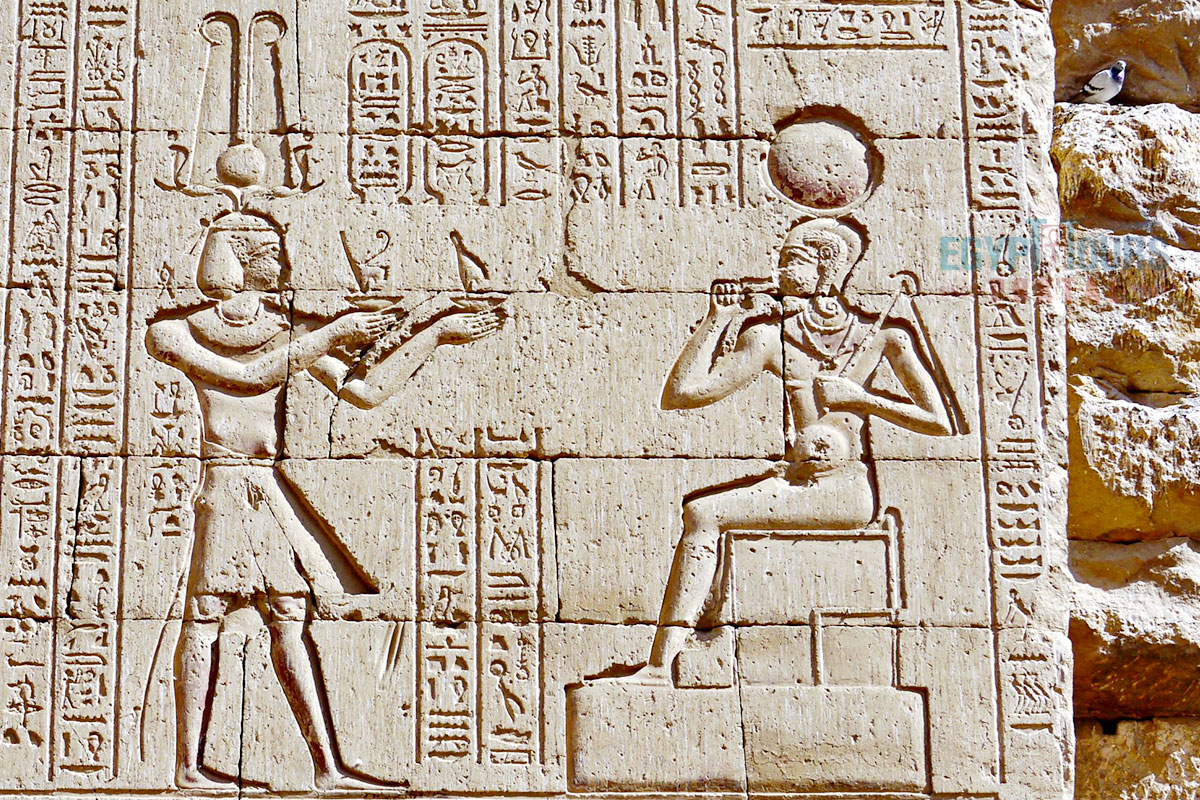
Several ancient Egyptian deities were essential to ancient Egyptian medicine, each embodying specific healing attributes:
The level of their advanced practices and traits was mind-blowing as they understood that any illness or a wound could be treated by using pharmaceuticals more than 3000 years ago, and recognized the potential healing abilities in massage and aromas.
Ancient Egypt had male and female doctors who specialized in different areas of medicine and more importantly understood the importance of cleanliness while treating the patients which indicated their early understanding for the concept of germs which was later confirmed in the 19th century CE, all these factors and medical procedures led the mortality rate in ancient Egypt to be less than any European hospital in the Christian era until the mid 20th century.
The art of medicine of the ancient Egyptians is extensively documented from the 33rd century BC until 525 BC, which makes it the oldest documented medical field of study in the world.
One of the documents was a passage of the Odyssey in 800 BC where he states, "the Egyptian men are more skilled in medicine than any of humankind" and "the Egyptians were skilled in medicine more than any of the other art forms".
In 440 BC, the Greek historian Herodotus wrote extensively of the advanced medicinal practices of the Egyptians, and also Pliny the Elder wrote in favor the Egyptian doctors.
Many great Greek names studied medicine in ancient Egypt at the temple of Amenhotep, such as Galen and Hippocrates, Herophilos, and many others who acknowledged the contribution of ancient Egyptian civilization to Greek medicine and were able to study the ancient Egyptian symbols, texts, beliefs, and pass them.
Examine the healing force of Egypt across all the incredible monuments where some of the innovative and creative people lived. All our Egypt tours and Nile River cruises will shed light on the tremendous greatness and allure of the immortal medical and architectural heritage of the glorious ancient civilization.
Private 4 Days Cairo Tour Packages for Australian Travelers 4 days Cairo Egypt Tour ...
Tour Location: Cairo – Giza...
5 Days Cairo and Alexandria Tour Package For Australian Travelers 5 days Cairo and A...
Tour Location: Cairo/Giza/Alexandria...
6 Days Cairo, Luxor & Aswan Tour Package For Australian Travelers 6 days Cairo, ...
Tour Location: Cairo/Giza/Aswan/Luxor...
Amazing 7 Days Cairo and Hurghada Holiday for Australian Travelers 7 Days Cairo &...
Tour Location: Cairo – Giza – Hurgh...
Ancient Egyptian medicine emerged with the early Dynastic Period (3100 BCE), evolving through empirical practices and religious rituals. By the Old Kingdom (2700 BCE), structured medical practices and documentation in the form of papyri had become established.
Egyptian medicine was a blend of scientific and spiritual practices. It relied on a broad range of treatments, including herbal remedies, surgical techniques, and incantations. Physicians believed that health was a balance of bodily and spiritual forces, so treatments often addressed both realms.
Egyptian medicine aimed to restore balance by treating physical and spiritual ailments simultaneously. Physical remedies, such as ointments and surgeries, addressed tangible symptoms, while incantations and amulets were used to protect patients from supernatural harm. This combination reflected a holistic approach to health.
Egyptian doctors, or “swnw,” learned at temple-based Houses of Life. These institutions trained doctors through hands-on apprenticeships and the study of medical texts, ensuring that knowledge was passed through generations. The training involved practical skill development and familiarity with medical papyri.
The mummification process provided Egyptians with an extensive knowledge of human anatomy. Embalmers gained insight into organ placement and preservation, which indirectly influenced medical knowledge. Although embalmers and doctors worked separately, this anatomical understanding shaped their diagnostic and treatment capabilities.
Primary sources on Egyptian medicine include medical papyri such as the Ebers, Edwin Smith, and Kahun Papyri. These documents are preserved in museums like the New York Academy of Medicine and the British Museum, with translations available through Egyptological studies.
Ancient Egyptian medicine was highly advanced, particularly in surgery, dentistry, and pharmacology. Their expertise in bone setting, wound care, and herbal medicine was significant, and many practices, such as antiseptic treatments, foreshadowed modern medicine. Egyptian practices also influenced Greek and Roman medicine.
Egyptian medicine was practiced consistently from the early Dynastic Period (3100 BCE) through the Late Period, enduring even under Persian and Greek rule. Egyptian medical knowledge continued to be respected and referenced, influencing later Greek and Roman physicians.
The entire country of Egypt deserve to be explored with its every heavenly detail but there are places that must be seen before any other such as the breathtaking Hurghada's red sea, The wonders of Cairo the pyramids of Giza, the great sphinx, the Egyptian Museum, Khan El Khalili Bazaar, the wonders of Luxor like Valley of the Kings, Karnak & Hatshepsut temple and the wonders of Aswan such as Abu Simbel temples, Philea temple, Unfinished obelisk and The Wonders of Alexandria like Qaitbat Citadel, Pompey's Pillar and Alexandria Library. Read more about the best places to visit in Egypt.
If you want to apply for a Visa On Arrival that lasts for 30 days then you should be one of the eligible countries, have a valid passport with at least 6 months remaining and pay 25$ USD in cash, as for the E-Visa for 30 day you should have a valid passport for at least 8 months, complete the online application, pay the e-visa fee then print the e-visa to later be presented to the airport border guard. You could also be one of the lucky ones who can obtain a free visa for 90 days. Read more about Egypt travel visa.
Egypt has a variety of delicious cuisines but we recommend “Ful & Ta’meya (Fava Beans and Falafel)”, Mulukhiya, “Koshary”, a traditional Egyptian pasta dish, and Kebab & Kofta, the Egyptian traditional meat dish.
The best time to travel to Egypt is during the winter from September to April as the climate becomes a little tropical accompanied by a magical atmosphere of warm weather with a winter breeze. You will be notified in the week of your trip if the Climate is unsafe and if any changes have been made.
You should pack everything you could ever need in a small bag so you could move easily between your destinations.
We have been creating the finest vacations for more than 20 years around the most majestic destinations in Egypt. Our staff consists of the best operators, guides and drivers who dedicate all of their time & effort to make you have the perfect vacation. All of our tours are customized by Travel, Financial & Time consultants to fit your every possible need during your vacation. It doesn't go without saying that your safety and comfort are our main priority and all of our resources will be directed to provide the finest atmosphere until you return home.
You will feel safe in Egypt as the current atmosphere of the country is quite peaceful after the government took powerful measures like restructuring the entire tourist police to include all the important and tourist attractions in Egypt. Read more about is it safe to travel to Egypt.
Wear whatever feels right and comfortable. It is advised to wear something light and comfortable footwear like a closed-toe shoe to sustain the terrain of Egypt. Put on sun block during your time in Egypt in the summer to protect yourself from the sun.
The best activity is by far boarding a Nile Cruise between Luxor and Aswan or Vise Versa. Witness the beauty of Egypt from a hot balloon or a plane and try all the delicious Egyptian cuisines and drinks plus shopping in old Cairo. Explore the allure and wonders of the red sea in the magical city resorts of Egypt like Hurghada and many more by diving and snorkeling in the marine life or Hurghada. Behold the mesmerizing western desert by a safari trip under the heavenly Egyptian skies.
There are a lot of public holidays in Egypt too many to count either religious or nation, the most important festivals are the holy month of Ramadan which ends with Eid Al Fitr, Christmas and new years eve. Read more about festivals & publich holidays in Egypt.
Egypt is considered to be one of the most liberal Islamic countries but it has become a little bit conservative in the last couple of decades so it is advised to avoid showing your chest, shoulders or legs below the knees.
Arabic is the official language and Most Egyptians, who live in the cities, speak or understand English or at least some English words or phrases. Fewer Egyptians can speak French, Italian, Spanish, and German. Professional tour guides, who work in the tourism sector, are equipped to handle visitors who cannot speak Arabic and they will speak enough English and other languages to fulfill the needs of all our clients.
The fastest way is a car, of course, a taxi. If you are in Cairo ride a white taxi to move faster or you could board the fastest way of transportation in Egypt metro if the roads are in rush hour.
The temperature in Egypt ranges from 37c to 14 c. Summer in Egypt is somehow hot but sometimes it becomes cold at night and winter is cool and mild. The average of low temperatures vary from 9.5 °C in the wintertime to 23 °C in the summertime and the average high temperatures vary from 17 °C in the wintertime to 32 °C in the summertime. The temperature is moderate all along the coasts.
It is the home of everything a traveler might be looking for from amazing historical sites dating to more than 4000 years to enchanting city resorts & beaches. You will live the vacation you deserve as Egypt has everything you could possibly imagine.









